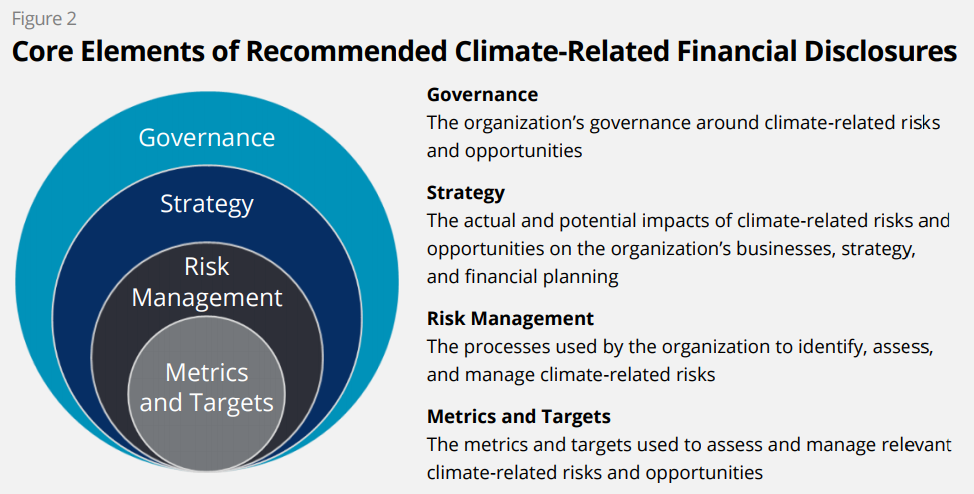“Have you heard about TCFD? It’s been launched by the FSB. And it’s being integrated into CDP!”
Welcome to the acronym-heavy world of corporate climate disclosure. The jumble of letters conceals a serious topic – climate change is one of the biggest risks faced by companies today. It’s not just about the long-term, physical risks. The speed of technological change means companies risk being left behind in the shift to a low-carbon economy, overtaken by niftier competitors or brand-new industries.
Yet few companies are reporting on climate impacts in a considered, consistent way. Investors can’t tell who is at risk, and who is best-prepared. According to KPMG, nearly three-quarters of major companies worldwide do not acknowledge climate change as a financial risk. Of those that do, fewer than one in 20 state the financial value at risk. The campaign group ShareAction says some companies are publicly backing the Paris Agreement target of 2°C of warming, while privately counting on catastrophic warming of 5°C or more.
It’s for this reason that in 2015, the G20’s Financial Stability Board (FSB) founded an industry-led taskforce on climate risk. The Task Force on Climate-related Financial Disclosures (TCFD)’s final recommendations report was published in June this year. The recommendations are structured around four themes (see below). For each, TCFD provides recommended disclosures for all companies and for specific industries. 
It’s important to note that the TCFD recommendations are only recommendations. They haven’t been adopted explicitly into national regulation (yet). But most listed companies already have a legal obligation to disclose material information to investors – including material climate-related information (see my colleague Peter’s blog on recent UK regulations here). Already, their public supporters include DowDuPont, Unilever, Philips and Shell, alongside a long list of banks and investors.
Which brings us to CDP. The environmental disclosure group, which is backed by investors managing over $100 trillion, has been quick to jump on board TCFD. CDP is planning significant changes to its climate change, water and forest questionnaires in 2018, aligning them with all four themes of TCFD.
It’s the next logical step for an organisation which has been working with investors since 2000 to improve corporate reporting on climate change – starting with disclosing CO2 emissions, then their green investments and targets, and now on the wider implications for their business. Under the draft CDP questions (due to be finalised in December), companies who want to keep their place on CDP’s coveted ‘A List’ will need to report on how their risk management processes consider climate change, and how climate-related risks and opportunities are overseen by the board and reflected in company strategy.
It’s clear that TCFD will have a significant impact on company reporting in 2018 through CDP alone. Answering the new questions will require collaboration between sustainability, risk and audit functions. And as soon as companies start reporting climate risk information to CDP, they will face the question: “why aren’t you putting this in your financial disclosures?”
Some of the TCFD recommended disclosures will be relatively straightforward for many companies to implement. Others will take more work. At the very least, all companies should be looking to mention the TCFD recommendations in their annual reporting this year, and set out how they plan to respond to them.
2018 will be the year of climate risk reporting. Act now to get a headstart.


